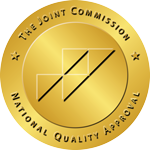What COVID Revealed About Addiction
We’re ready for it to be over.
Completely over: as in no new variants, no new school closings, no new pandemic-related curveballs.
We’re tired of hearing phrases like “the new normal” and “COVID changed everything.”
Before we continue, let’s do a quick reality check.
Although we often hear phrases like “we’re all coping with similar issues” and “everyone is in the same boat” when discussing the impact of COVID in our lives, that’s not necessarily true. Subjective experiences of the coronavirus pandemic vary by – among other things – location, demographics, health status, attitudes toward COVID, and the public health response implemented by local officials.
That list is obviously incomplete.
Suffice it to say that the experience of an individual in Brooklyn, New York, may differ from the experience of an individual in a rural town like Kamiah, Idaho. And within those two examples, subjective experiences may differ. A divorced mom with two kids in Kamiah likely had different COVID stories than a retired fly-fishing guide living alone in a mountain cabin outside of town. A twenty-something lawyer living with roommates in a house in Queens likely has different COVID stories than a family of four living in a three-bedroom apartment in Bensonhurst.
We say all that, by way of preface, to let you know we understand that what we talk about in this article will not apply to everyone. We assume variation across populations. As mental health professionals working in an evidence-based discipline, we understand that any sample set will contain both predictable and unpredictable diversity.
However.
We notice recurring themes when we talk to our colleagues who also work in addiction recovery.
In this article, we’ll introduce two of those themes, and address one in-depth.
New Routines Uncover Unresolved Issues
You may have heard or read the term functional alcoholic.
While the addiction treatment community has moved away from using the word alcoholic – as well as the term addiction, for that matter – it’s cultural shorthand that means the following:
“An individual with an alcohol use disorder that does not have a noticeable impact on that individual’s ability to carry out day-to-day responsibilities and commitments related to work, school, family, and peers.”
You can see the new, preferred terminology in that definition. We now refer to a person once labeled an alcoholic as an individual with an alcohol use disorder (AUD). This aligns with two trends in addiction treatment.
First, it’s consonant with the disease model of addiction, which defines alcohol or substance misuse as a mental health condition or disorder that responds to evidence-based treatment.
Second, it emphasizes a person-first/patient-first/patient-centered approach to all medical practice, which recognizes that treatment for any medical condition – mental or physical – is most effective when that treatment moves past addressing symptoms only, and moves toward addressing the biological, psychological, and social issues present in the patient’s life.
Now that we have our terms defined, we’ll talk about two major themes we see happening in the treatment community. Here’s the first:
COVID revealed the functional as dysfunctional.
What this means is that in some families, serious drinking problems that went unnoticed or somehow flew under the radar are now plain to see and flashing red on everyone’s radar. We’ll discuss this in a moment. Here’s the second theme:
COVID revealed unresolved trauma.
We’ll discuss that theme in another article.
Let’s be clear: these are anecdotal observations. We don’t have evidence in the form of peer-reviewed journal articles with vetted and statistically analyzed data. What we have is our experience – which we’ll share now.
Why Did This Happen?
We’ll talk about functional drinking revealed as dysfunctional, disordered drinking first.
What appears to have happened is that many people whose daily routines – work, school, social life, hobbies – masked their problem drinking patterns no longer had daily routines in place that masked their problem drinking patterns.
Let’s take a relatively extreme – but not at all unusual – example. Say, for instance, a person with a 9-5 office job has a serious drinking problem, but before COVID, nobody knew it. They themselves didn’t know it.
What no one knew was the bottle of beer or glass of wine they drank every day at lunch stopped alcohol withdrawal symptoms from appearing.
Then, about five hours later, when withdrawal symptoms may have appeared again, a regular stop at the neighborhood pub for another beer or glass of wine stopped withdrawal symptoms from appearing – for the second time in a day.
Finally, when this person returned home at night around seven or eight o’clock – not drunk, not displaying any outward signs of a serious problem – a nightcap (or two) was enough to fall asleep and keep withdrawal symptoms at bay until lunch the next day.
When Enabling Routines Change
Then, with all the changes related to COVID, the daily structure – the enabling routine – that supported the problem drinking disappeared.
That means when lunchtime rolled around, two things might have happened:
- The absence of beer or wine in the fridge might have caused withdrawal symptoms to appear – for the first time, ever.
- If beer or wine were in the fridge, consuming a beer or a glass of wine every single day at lunch might have caused a spouse, roommate, or family member to ask, “Hey, do you really do that every day?”
You can guess how the person drinking might have responded to that. You can also predict how the rest of the day might have played out. We bet that most scenarios you come up with reveal the presence of a drinking problem. The person might have made a nonessential trip to the store to buy alcohol. Because for them, preventing withdrawal was essential. The person might have broken social distancing guidelines to have drinks at a bar that was open in defiance of local guidelines for bars and restaurants. Because for them, having a drink out of sight of family was also essential.
In our informal conversations among our colleagues, we agree situations like what we described above probably played out all over the country.
How to Handle Problem Drinking Revealed by COVID
As professionals working in the field of alcohol and substance use disorder treatment, we have a disclaimer. Only a mental health professional or physician trained in addiction can determine a clinical diagnosis of alcohol use disorder.
Therefore, if what we write above resonates with you – or you saw the signs of disordered drinking in someone close to you – the first thing to do is make an appointment with a licensed and credentialed medical or mental health professional and ask for a full biopsychosocial assessment for the person you’re concerned about.
Tell the clinician what you saw. Tell them you’re concerned your friend or loved one has an alcohol use disorder. Or tell them you, if you see yourself in the above discussion – might have an alcohol use disorder. Legitimate, effective assessments can be conducted via telehealth. It’s possible to make this happen in areas where a licensed professional is not nearby.
Recommendations for treatment should accompany assessment results. An addiction professional may recommend detox followed by residential treatment at an accredited rehab in Ohio. Once you get an assessment, you collaborate with everyone involved. You work with the doctor, the person with the diagnosis, your family. Together, you decide what course of treatment meets your specific needs and personal goals.
One thing we know a well-trained professional will tell you is fundamental. Evidence-based, integrated treatment tailored to the individual leads to the most favorable outcomes for people diagnosed with alcohol use disorder.
People can and do recover.
We see it happen every day at our rehab in Cincinnati, Ohio.


